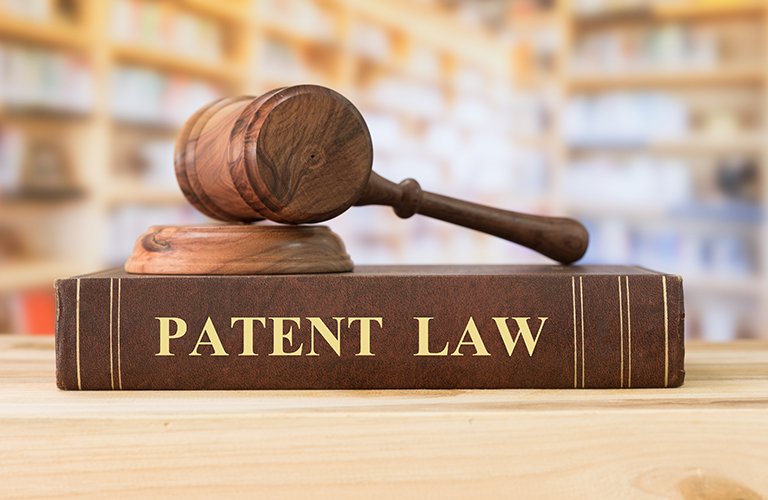
Last week, in Helsinn Healthcare SA v. Teva Pharmaceuticals USA Inc., the Court of Appeals for the Federal Circuit (“CAFC”) ruled that the America Invents Act’s on-sale bar provision renders patents invalid if the invention was sold prior to patenting, even if the sale did not publicly disclose the invention.
The on-sale bar invalidates a patent if the claimed invention is sold more than a year prior to the filing of the patent application. Prior to the AIA, federal courts held that all sales, confidential and public, triggered the on-sale bar. The AIA, effective on patents filed after March 16, 2013, amended the on-sale bar to state that an individual is entitled to a patent unless the claimed invention was patented or “in public use, on sale or otherwise available to the public” more than a year before a patent is filed. The “otherwise available to public” phrase led many to believe, including Helsinn (the plaintiff-patentee), that only public sales which disclosed the invention to the public triggered the on-sale bar under the AIA. The Federal District Court of New Jersey echoed this understanding when it found that only public sales disclosing the invention activate the on-sale bar.
The CAFC disagreed and overturned the district court’s holding. Before the CAFC, Helsinn argued that the AIA amendments to the on-sale bar left only publicly disclosed sales (i.e., those that disclose the invention itself to the public) with the power to invalidate a patent. The Federal Circuit, in its first interpretation of the amended statute, stated that such a finding “would work a foundational change in the theory of the statutory on-sale bar.” The court ruled that a sale of a patented invention more than a year before filing the patent is enough to invalidate the invention, even if the invention itself was not disclosed by the sale. While this ruling might indicate that all sales, whether public or not, are invalidating events, it is important to note that the court “declined the invitation by the parties to decide this case more broadly than necessary,” focusing on the facts of the sales in the present case, discussed below.
Helsinn had four patents covering its anti-nausea drug Aloxi. Three of the patents were subject to pre-AIA interpretation and one was subject to post-AIA interpretation. Almost two years before applying for a patent, Helsinn entered into a licensing agreement and a supply and purchase agreement with MGI Pharma. The agreements collectively identified the product, the price, method of payment, and method of delivery, as well as an acknowledgment of FDA testing of the drug. Almost all terms of the agreement were publicly disclosed, except the price terms and the specific dosage formulations covered by the agreements. Further, the Aloxi drug had been tested successfully in clinical studies at the specific dosage formulations ultimately covered by the claims of the issued patents more than a year before any patent filing. The FDA did not approve the drug until July 2003, less than six months after Helsinn had filed its first patent application on January 30, 2003.
Helsinn brought its patent infringement suit against Teva for filing an ANDA for a generic version of Aloxi. At trial, Teva argued that all of the patents were invalid based upon the sales agreement between MGI and Helsinn entered into more than a year before the filing of Helsinn’s patent applications. The district court found that the sales agreement was not an invalidating on-sale activity for two reasons. First, although the court found the two agreements did qualify as sales agreements it interpreted, the “otherwise available to the public” phrase as meaning that only public sales triggered the AIA’s version of the on-sale bar. Therefore, since Helsinn’s sale did not disclose details of the invention (i.e., the specific dosage formulations), it was not a public sale invalidating the one post-AIA patent. Second, the district court found the invention was not reduced to practice more than a year before the patent filings because the FDA approval had not been received. As a result, the drug was not “ready for patenting”; accordingly, the sales agreement did not invalidate the three pre-AIA patents.
The Federal Circuit disagreed. The court ruled that the amendment to the on-sale bar showed Congress meant that the public disclosure of the sale itself would make the patented product available to the public; the sale does not have to disclose all of the details of the invention publicly. The court concluded that “after the AIA, if the existence of the sale is public, the details of the invention need not be publicly disclosed in the terms of sale.” Therefore, the announcement of the sale was enough to invalidate the post-AIA patent. In addition, the Federal Circuit also reversed the district court’s decision on the pre-AIA patents, finding that requiring FDA approval to show the invention was “ready for patenting” was too high a standard. All that is needed to determine the invention was ready for patenting was to show the invention worked as intended. As a result, all four patents were found invalid by the appeals court.
What are the takeaways from this case? A patent is unenforceable if a sale is made known to the public more than a year before the filing of the patent application, even if it does not disclose the invention itself. However, does the secret sale of an invention more than a year before a patent application is filed invalidate the patent? Given the statements above, and the court’s reluctance to address that particular issue, the question as to whether private sales are invalidating acts under the on-sale bar remains open. However, such an issue can be avoided by pursuing patent protection before any sale occurs, or at least within a year of the date of sale for those jurisdictions that don’t require absolute novelty.

